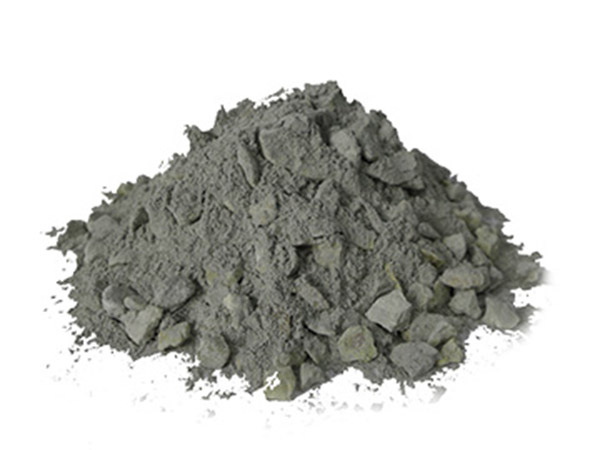Several years ago, steel fiber corundum castable and high-alumina castable were used for the kiln mouth of the rotary kiln, but the results were not satisfactory. They were prone to cracking and had poor thermal shock resistance, resulting in a short service life and increased costs.
Refractory castable is composed of aggregates, powders, binders, additives, water, and other liquid materials. Under high-temperature conditions, it exhibits good sintering performance, volume stability, corrosion resistance, and high-temperature mechanical properties. The refractory lining at the kiln mouth experiences frequent rapid cooling and heating, with operating temperatures ranging from 800°C to 1250°C, and it needs to withstand the wear of cement clinker and alkali corrosion. The selection of the main materials for refractory castables should be based on their specific usage conditions to achieve a balance between low cost and good performance. Refractory aggregates such as secondary and tertiary bauxite clinker, corundum, and mullite are selected, with an enlarged critical particle size and reasonable particle grading to achieve densification, thereby improving thermal shock resistance and strength. Refractory powders, binders, additives, and other materials form the matrix of the castable and also require proper particle grading to enhance their performance. At room temperature, the castable can achieve sufficient construction strength, while under high-temperature conditions, phase transformation and sintering occur. Meanwhile, in-situ reactions occur between the materials, and their slight expansion can compensate for the sintering shrinkage, thereby improving the castable’s thermal shock resistance and strength.

The selection of additives is also crucial and needs to consider factors such as workability and baking performance. When working at high temperatures, it is important to achieve excellent results. The additives used for kiln mouth refractory castables mainly include dispersants, accelerators, plasticizers, sintering agents, expanders, and anti-explosion agents. Let’s focus on sintering agents. The materials used as sintering agents include raw clay, zircon, titanium dioxide, and manganites. These substances undergo in-situ reactions at operating temperatures, producing a certain amount of mullite crystals, zirconia phases, titanium aluminates, and incompatible melting compounds. This leads to volume expansion and the generation of microcracks, which can compensate for the sintering shrinkage of the castable, thereby improving its sintering strength, corrosion resistance, and thermal shock resistance. The dosage of sintering agents varies depending on the materials used. Excessive use of sintering agents can lead to excessive expansion and liquid phases, resulting in reduced thermal shock resistance and corrosion resistance of the castable, which also affects its performance. Therefore, it is necessary to select the appropriate variety and dosage of sintering agents based on the operating temperature, thickness of the sintering layer, volume stability, and corrosion resistance requirements to meet the practical usage demands.
Experimental results have shown that steel fiber-reinforced refractory castables exhibit 3 to 4 times higher strength than castables without steel fibers. When used in the kiln mouth refractory lining, they can have a service life of over one year. Therefore, it is necessary to include heat-resistant steel fibers in the refractory castables used at the kiln mouth. It should be noted that when preparing steel fiber-reinforced refractory castables, the steel fibers should be uniformly mixed into the castable to prevent the formation of fiber clusters. Otherwise, the service life of the kiln mouth refractory lining will be reduced.
Therefore, when purchasing rotary kiln castables, it is crucial to communicate effectively with technical personnel to ensure that the purchased castables can guarantee in-situ reactions, sintering performance, and volume stability between the matrix materials. This will result in good flexural strength, thermal shock resistance, and corrosion resistance. This precaution will prevent the purchase of castables that do not meet expectations, thereby avoiding financial losses and negative impacts on overall performance.
